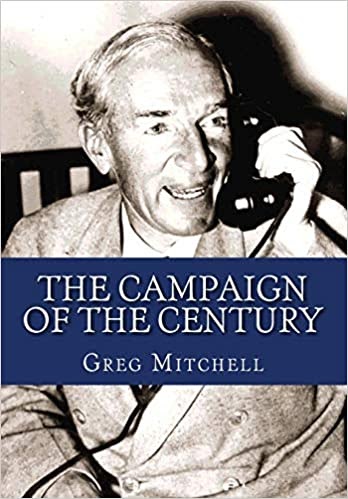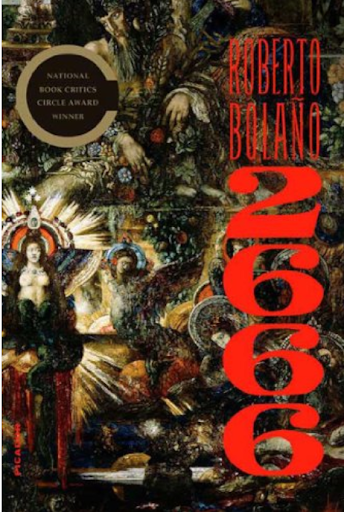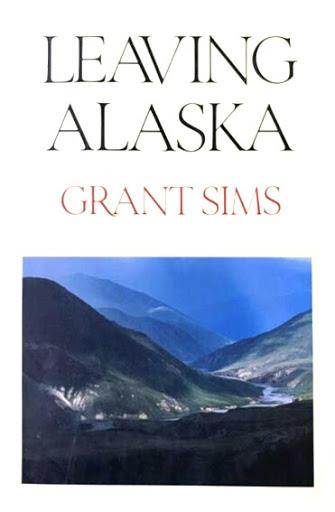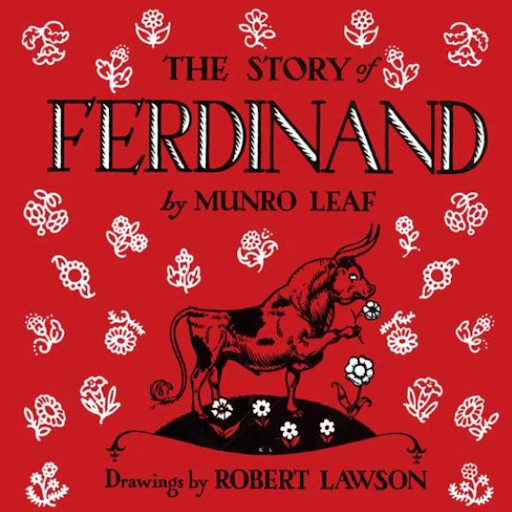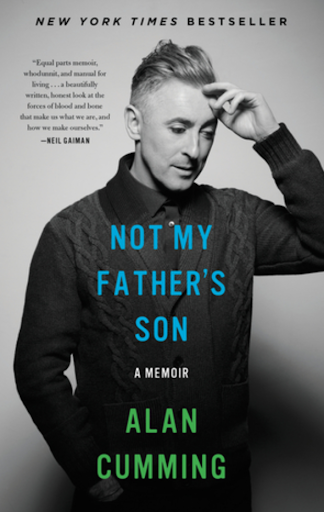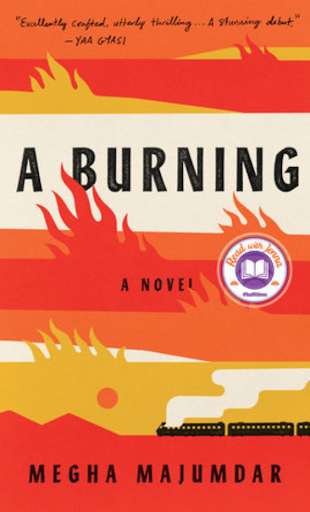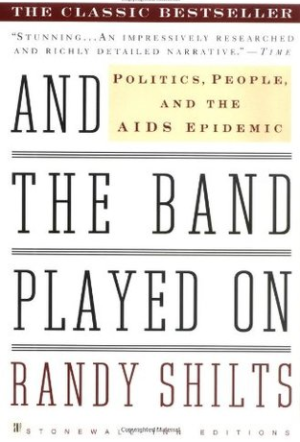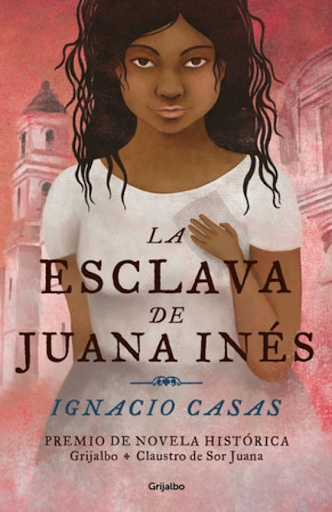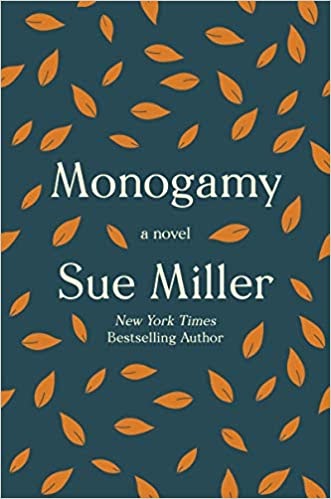Looking through a tunnel of books | Adobe Stock photo
| FEATURED
Even in our solitude, books are capable of opening the mind to the great big world. Better yet, they can open the world to the universality of the joy and pain of life. James Baldwin once wrote that “you think your pain and your heartbreak are unprecedented in the history of the world, but then you read. It was books that taught me that the things that tormented me most were the very things that connected me with all the people who were alive, who had ever been alive.”
As has been our tradition, Voices of Monterey Bay asked readers to share what they’ve been reading this year. The books didn’t necessarily need to be published this year; rather, they are works that opened their minds to whole new worlds. Whether fiction or fact, memoir or flights of fancy, the books our reviewer chose brought them much closer to the world around us. The following are 14 books that touched a nerve for each of our reviewers.
Death of a Naturalist
Seamus Heaney (1966)
By Larry Parsons
Thinking back on a stunningly lousy year to recall my 2020 reading, one word leaps to mind: doomscrolling.
That anxious, constant scan of the latest news on social media — both before and after Nov. 3 — with frayed nerves expecting more outrage, horror and Trumpian insanity. It continues today, nearly 40 days after the election. Too much of this December day, I confess, has been dawdled away doomscrolling.
It’s fitting the best book I read this wretched year came by way of a wrenching move, a hurried packing and a major culling of a bulging personal library I’d lugged for too many years.
One gem I kept is only 46 pages long and came out in 1966. “Death of a Naturalist” is the debut collection by Seamus Heaney, the 1995 Nobel Prize winner for literature acclaimed as the finest Irish poet since Yeats. He’s the poet President-elect Biden is fond of quoting.
I’ve owned the book for a long time — I think I got it at the old Borders in Sand City — but never have read it cover to cover until now. What tonic for eyes and spirit dulled by nearly 12 months of doomscrolling! What truths to savor like fine drink after four years gagging on firehoses of falsity.
With neatly fitted rhymes and meters, Heaney casts his then-young man’s eyes on his rural childhood and basic labors like shoveling, hand-plowing, churning butter. Other subjects include characters in small towns, young love, young death, and the Irish landscape’s pull on Irish artists.
There’s one, “For the Commander of the ‘Eliza,’” that foreshadows today’s inhumane treatment of refugees. It’s about a British Coast Guard commander refusing to help a rowboat of starving Irishmen fleeing the great famine of the 1840s.
“Let natives prosper by their own exertions; Who could not swim might go ahead and sink,” Heaney sums up the British government’s policy.
A bonus for not delving into this classic until now is how much help is available online for readers. Just Google Heaney with a poem’s title, and you hit the rainbow’s end.
There are essays to help understand meanings, vocabulary and poetic techniques. In many cases there are recordings of Heaney himself or other fine poets reading the pieces. The poems come even more alive with the spoken words.
The Campaign of the Century: Upton Sinclair’s Race for Governor of California and the Birth of Media Politics
Greg Mitchell (1992)
By Paul Wilner
Greg Mitchell’s “The Campaign of the Century: Upton Sinclair’s Race for Governor of California and the Birth of Media Politics,’’ originally published in 1992, is a timely — and cautionary — tale that casts light on the tragicomic scenes unfolding this year.
The deeply reported but evenhanded account portrays the muckraking novelist’s quixotic campaign to “End Poverty in California,’’ in the 1934 governor’s race with a mix of economic policies that went above and beyond the New Deal remedies available at the time. Bernie Sanders, anyone?
After an initial outburst of enthusiasm from Californians desperate to surmount their circumstances, the idealistic, unworldly Sinclair soon found himself fighting off a concerted campaign by the newspaper establishment of the time – including the Los Angeles Times, led by union-busting Harry Chandler and political “kingmaker”’ Kyle Palmer, the San Francisco Chronicle and the Hearst empire. Even H.L. Mencken, growing more conservative with the passage of time, piles on.
They were joined by Hollywood moguls, including MGM’s Louis B. Mayer and “boy wonder’’ head of production Irving J. Thalberg, who repudiated his Socialist youth by commissioning ersatz newsreels purporting to show unemployed people traveling West in droves to cash in on Sinclair’s utopian proposals. Fake news, indeed.
But in some ways, Sinclair was his own worst enemy — the L.A. Times ran a daily front page feature quoting his previous published remarks attacking everyone from the Boy Scouts to the American Legion, the Church and even the institution of marriage.
And his hopes for an endorsement from the ever-canny Franklin Roosevelt did not materialize — uneasy with the radical platform, FDR strung him along.
Sinclair’s opponents did not stint at dirty tactics, including (wait for it) voter suppression movements aimed at disenfranchising thousands of transient and homeless citizens. Republican candidate Frank Merriam — who failed to attract enthusiasm even from his supporters — nevertheless prevailed, by a margin of 200,000 votes.
There are some local angles worth noting: James Cagney, of all people, was red-baited for supporting efforts by Lincoln Steffens and his wife, Ella Winter, in support of striking ag workers in the San Joaquin Valley. Merriam carried Carmel by 600 to 247, including a vote by Robinson Jeffers. And John Steinbeck carried out research for “In Dubious Battle’’ by interviewing two strike organizers, wanted by vigilantes, who were hiding out in Seaside.
Mitchell also chronicles the birth of the media campaigns, powered by wealthy donors, that dominate the modern political scene. Those who do not understand the past are doomed to repeat it.
Other relevant reading: “What It Takes,’’ Richard Ben Cramer’s classic on the 1982 presidential race, particularly for his sympathetic portrayal of Joe Biden. I’m also looking forward to reading “Kamala’s Way: An American Life’’ (Simon & Schuster), coming in January from my former colleague Dan Morain, who saw the future vice president-elect up close during his tenure as Sacramento Bee editorial page editor.
Onward.
Paul Wilner is a Monterey-based writer and editor who has worked for the Monterey County Weekly, San Francisco Examiner and Chronicle, The Hollywood Reporter and the New York Times.
In the Dream House
Carmen Maria Machado (2019)
By Victoria M. Bañales
“In the Dream House” is Cuban-American Carmen María Machado’s second book. Longlisted for the 2020 Andrew Carnegie Medal for Excellence in Nonfiction, the book is a haunting memoir based on the lesbian author’s experience of domestic abuse.
Written in the second-person “you” narrative voice, one of Machado’s purposes is to not only to retell her story but also give visibility to the hidden topic of intimate partner abuse within LGBT relationships. Enter a dreamy blond petite woman for whom Machado falls hard. Machado and the woman — referred to simply as “she” or “her” — become romantically involved and move in together into their Indiana “dream house.”
But a darkness looms behind the walls of the idyllic home as their romantic relationship — replete with steamy love-making scenes — spirals into one of physical control and mental abuse, leaving the author caught in a nightmarish trap in which “you” want to flee but feel stuck.
As a result of Machado’s second-person narrative voice, readers experience the story as if “you” were there, inside the house, inside the author’s head — adding to the intensity of the read. A brilliant writer and fresh voice in the literary scene, Machado employs a plethora of experimental and creative techniques to educate readers about the realities of intimate partner abuse.
At one point, for example, “you” enter a series of “choose your own ending” chapters, but unlike most narratives of the kind where choices lead to heroic escapes or fatal endings, “you” will find yourself circling back to the same scenarios, re-experiencing the abuse, in and out of revolving doors, back to the same place — a chilling metaphor for what it’s like to be stuck in an abusive, codependent relationship.
Although “In the Dream House” is first and foremost memoir, the book blurs genres, delving into queer theory, history, music, film, fable and more. I found myself diving into the internet, looking up authors, movies and songs, fascinated by the wealth of information contained within the book. “In the Dream House” is a powerful account, one that will stay with you long after “you” have escaped from its pages.
2666
Roberto Bolaño (2013)
By Chaps Poduri
Allow me to let you in on a couple of secrets:
- I’ve read only one book this year.
- One reading doesn’t do justice to that book.
Still, allow me to present to “2666,” by Chilean author and poet Roberto Bolaño, his final, concentrated — and posthumous — work of art.
This 900-page masterpiece is presented in five novellas — the backdrop for all of them being the horrific femicides of Ciudad Juárez (fictionalized as Santa Teresa), and if the five parts formed a circle, a central character in the form of an elusive German writer named Archimboldi (who mysteriously resembles Bolaño).
Bolaño is a literary genius in his own right — with “2666” he has created a world full of plots and subplots, visions and dreams, facts and truths, stories weaved within other stories. The tone is tempered with a mixture of Bolaño’s wry comedy to something more fact based akin to a newspaper report or an autopsy. If you are thinking David Lynch you are on the right track.
Personally “2666” made me reflect upon socio-economic issues and our interaction with society in this vast jungle of life which made the book’s epigraph, “An oasis of horror in a desert of boredom” all the more fitting. While long sentences are typical of Bolaño, here’s a much smaller excerpt of his style of writing:
“If volition is bound to social imperatives, as William James believed, and it’s therefore easier to go to war than it is to quit smoking, one could say that Liz Norton was a woman who found it easier to quit smoking than go to war.”
“2666” was originally published in Spanish in 2004 and translated to English translation by Natasha Wimmer in 2006. To set the record straight on these aspects, this is very much a legacy work — think Orwell’s 1984.
Although events in “2666” are set in the 20th century, Bolaño has set parallels that span time. Wimmer’s expressive rendering, structure and the mechanics of the prose of Bolaño’s work is nothing short of extraordinary.
And as a parting comment let me impress upon you one of many fun facts about the novel: one of the sentences in the opening acts of “2666” is more than five pages long. Epic.
Chaps Poduri was elected to the Pacific Grove City Council in November. He is a treasury solutions consultant for states, cities and other public entities in the United States.
Leaving Alaska
Grant Sims (1994) (Atlantic Monthly Press. Out of print but available online.)
By Royal Calkins
“I’ve never understood the hiker’s habit of following the highest ridge to the tallest peak. A slope is a watershed but the top of a mountain is the end of its usefulness, neither nourishing life nor facilitating it. Wildness in terms of mountaintops is merely the chaotic geology of magmatic caprice. Although we have come to associate wildlife with mountains, in reality our national parks and preserves are among the unkindest of our lands, the least suitable for both beast and man. It was we who pushed the lowland grizzly, the prairie wolf, the wetland deer and elk into the high alien hills, and, oddly, within a generation or two we began to think of them all as belonging way up there. Most do not; for most, mountaintops are lands of exile.”
I finally read my friend Grant Sims’ book, “Leaving Alaska,” this year, more than 25 years after he actually left Alaska. I waited because I knew he had died around 1998 but somehow felt that he wouldn’t really be gone until I had read his last work.
It is an epic account of the years he spent worshiping Alaska, teaching writing, fly fishing, making friends in villages frozen in the endless darkness of Arctic winter and putting his journalistic skills to great use covering the Exxon Valdez oil spill of 1989 for Outside magazine.
I knew Grant when we worked at a terrible Northern California newspaper that did not appreciate his skills. At the time, he demonstrated his great promise with a groundbreaking feature story for Rolling Stone magazine about bandits who were robbing marijuana grows in the Sierra Nevada foothills. I knew I could never write like him. The 315 pages of “Leaving Alaska” prove me right.
Jim Harrison, the great American writer who specialized in tales of wild lands, wrote one of the blurbs on the jacket: “There is a great deal of heartache but the book is also hopeful, and the writing is of such quality that you wouldn’t care if the book was about Kansas or Michigan. “Leaving Alaska” should be a model for all those environmental writers who give us only anger mixed with woodlot bon mots.”
I knew Grant was gifted, but we talked mostly about fishing, good beer and his woman troubles. Reading the book, I was surprised by the depth and breadth of his knowledge. I hope but doubt that his book was a commercial success, more lucrative than his screenplays, which included some “Gunsmoke” scripts and a terrible made-for-TV movie.
So why did he leave Alaska? He never comes right out and says it, but scatters clues throughout.
“I wasn’t yet sure that enough of us had enough honest hope to carry the business of saving this last best place up here and, by extension, ourselves and the rest of humankind. We were a complacently greedy folk; and even now, after a record of environmental travesty that had swept from coast to coast and spilled into the oceans at both sides, we found it all too easy to swallow the Great Corporate Promise of clean technology. It had served our own rapacity well, that promise, in the chalice of a nation’s convenient faith, it was an elixir, subduing opposition, placating politics, consoling our despair.”
Royal Calkins is an investigative reporter with Voices of Monterey Bay.
The Story of Ferdinand
Munro Leaf, illustrated by Robert Lawson (1964)
By Fred Hernandez
This worm poop of a year offered grim reading. After reading 331 pages of Ken Follett’s “The Evening and the Morning,” I felt the need for an afternoon nap. So I never got to the end at page 913. And I lost interest in J.K. Rowling’s “The Ickabog” on page 139, even though the chapter is entitled King Fred Is Worried. Ick, indeed.
I did finish Fredrik Backman’s “Anxious People,” but was disappointed that he has lost his charm.
Sharon Randall’s “The World and Then Some” gave me hope when the plucky main character finds a reason to live.
But the book that made the most difference in my year of drab distancing and huge personal loss was an old childhood friend, “The Story of Ferdinand,” by Munro Leaf. I own the 1964 version, lushly illustrated by Robert Lawson.
Ferdinand the bull knows what makes him happy: smelling flowers. The other little bulls run and jump and butt heads. But not our hero. He inadvertently gets picked to fight in the big bullring in Madrid. He is expected to fight fiercely and butt and snort and stick his horns about.
What does Ferdinand do? He sits peacefully in the middle of the huge ring and smells the flowers worn in the spectator women’s hair. This does not play well. He soon is exiled back where he came from, sitting under the cork tree smelling the flowers. And he is happy once again.
Amid pestilence and peril, I choose to love my family, to play with the dog, to eat good food, to listen to good music, to read good books and to make people laugh. Those are my most important masks.
Fred Hernandez is a retired editor from Pacific Grove.
What Unites Us: Reflections on Patriotism
Dan Rather (2017)
By Joe Livernois
Having spent a considerable chunk of my adulthood in pursuit of journalism, I’m aware of the misguided perceptions that dog the profession. Reporters are all a bunch of hard-boiled, skeptical troublemakers hellbent on driving some nefarious agenda that will ultimately destroy the moral fabric of civil society. I know that to be the label because I’ve heard it from the cynical manipulators of American politics since the day I fell off the turnip truck and started pounding a keyboard as a reporter many dozens of years ago.
This notion is an obvious and consciously ridiculous insult; my experience in the company of great journalists is that they are, at the core of their being, among the fiercest defenders of truth, justice and the American way I’ve ever known. It sounds cornball and perhaps naive, I know, but every American journalist worth her/his salt is dedicated to the notion that our valued and trusted American institutions must survive the hubris and the corruption of their minders.
And so, having witnessed all the deliberately jaundiced campaigning to discredit honest journalism by the powers that be during the past decade, it did this old reporter’s heart good to read Dan Rather’s incisive new book, “What Unites Us: Reflections on Patriotism.”
Rather has been a witness to history since the early ’60s; his Texan sensibilities and his well-honed understanding of American ideals have served him well. “What Unites Us” is an incisive summary of what he’s learned along the way. It is a reminder of what it means to live in a free society that values our common humanity.
We’ve strayed along the way, certainly, so Rather’s reminder should do us all good. Unfortunately, the cynics and self-serving politicians would rather see us divided and ignorant of the ideals that make America truly great.
“America at its best is a wonderful, diverse, and spirited chorus,” Rather writes. “When we sing together, our message is amplified and it can shake the heavens.”
“What Unites Us” is divided into five quick sections that address Freedom, Community, Exploration, Responsibility and Character.
Importantly, it leads with a chapter that defines Patriotism. Rather reminds us that patriotism is “not a cudgel.” Patriotism does not pound its chest and it is not the flag pin on a politician’s lapel. And it certainly isn’t nationalism. Indeed, Rather is troubled to bear witness to this new wave of jingoism and misapplied pride.
“(N)ationalism is a monologue in which you place your country in a position of moral and cultural supremacy over others,” he writes. “Unchecked nationalism leads to conflict and war. Unbridled patriotism can lead to the betterment of society. Patriotism is rooted in humility. Nationalism is rooted in arrogance.”
As a journalist, I embrace his acknowledgement that our nation was built on a foundation of ideals that are best nurtured by our better natures. And, like the rest of us, he believes his love of country is “imbued with a responsibility to bear witness to its faults.”
Joe Livernois is a founding editor of Voices of Monterey Bay.
Not My Father’s Son
Alan Cumming (2014)
By Kathryn McKenzie
I’m a sucker for a good memoir, and I have long been an admirer of the actor Alan Cumming. Not every actor can make it as a writer, but Cumming is one of the rare ones whose talents straddle both spheres.
A well-known stage, screen and film actor, Cumming is probably best known as the wily lawyer Eli Gold on the TV series “The Good Wife,” and reading about what he had to overcome to achieve his life’s goals makes me admire him all the more.
“Not My Father’s Son” is Cumming’s examination of a devastating childhood in Scotland, in which he and his brother were emotionally and physically battered by their father before finally escaping as teens. Cumming endured a mental breakdown in his late 20s before finally beginning to work through his childhood trauma and to try to understand the far-reaching effects of this abuse.
After his success as an actor ramped up, he was invited to appear on the celebrity genealogy show “Who Do You Think You Are?” in 2010. Through the filming of the show, he would learn a series of facts about his late grandfather, a war hero who had seemingly abandoned his family and died mysteriously overseas. Cumming would discover that the truth was a bit more layered and complex than it first appeared.
Around the same time, he and his brother took a DNA test to see if, in fact, they both did have the same father. Cumming learned that the reason why he was abused was because he may not have been his father’s son — his father believed that Cumming’s mother had had an affair with another man.
There is an agonizing waiting period in which Cumming waits for these test results, not sure if he wants to believe that the man who mistreated him all those years was, indeed, his biological father. The reader will wait in just as much suspense through this narrative.
Cumming writes with warmth and even humor about his fraught family history, and along the way tells a coming-of-age story and self-discovery that eventually leads him to a loving marriage with his husband, Grant.
It’s hard to fathom how Cumming was finally able to escape the bonds of childhood abuse to find himself, but somehow he found the strength to vanquish the past and to go on to happiness and success. Sure, there are other celebrities out there who have written about their struggles, but you’d be hard-pressed to find another memoir that treats the subject with such wit and candor as Cummings manages to do.
Kathryn McKenzie is an editor and writer for Voices of Monterey Bay and other publications, and is the co-author of “Humbled: How California’s Monterey Bay Escaped Industrial Ruin.”
A Burning
Megha Majumdar (2020)
By Cade Johnson
Megha Majumdar’s debut novel “A Burning” was my favorite book I read this year. The propulsive novel follows three characters, primarily a young Muslim woman named Jivan living in the Kolagaban slum of Kolkota, India. In the middle of the night, after witnessing a terror attack on a train station, Jivan is taken by police from her bedroom for her alleged involvement in the attack.
Jivan is innocent, but because she posted a comment to Facebook expressing skepticism of the police for failing to act at the scene of the attack, she has been framed by both the government and the media as a culprit.
The novel also follows Lovely, an aspiring Bollywood actress and Jivan’s English tutee, as well as PT Sir, Jivan’s former physical education teacher and a right-wing radical. Jivan’s absolution from her alleged involvement in the attack hinges on whether PT Sir will give a false testimony against Jivan to secure himself a leadership role in the Jana Kalyan party, or whether Lovely will come forward with Jivan’s alibi about why she was on the train platform that day. For both of them, setting Jivan free might mean forfeiting their paths to power and fame.
It’s a complicated and harrowing political novel with a glimmering, radical sympathy and a sharp, immersive prose. Having struggled with the structure of other episodic novels, like “All The Light We Cannot See” by Anthony Doerr, I always felt it wasn’t for me, but Majumdar’s execution convinced me otherwise. Since I read it this summer, I’ve thought about it nearly everyday, and it’s also been my go-to recommendation for anyone looking for a good book to read. I’m looking forward to whatever’s next for Majumdar — I’ll read anything she writes.
Cade Johnson is a Salinas-based journalist who writes for Voices of Monterey Bay.
And the Band Played On: Politics, People, and the AIDS Epidemic
Randy Shilts (1987)
By Eric Mora
There is no denying that COVID defined life in 2020. It caused incredible suffering and altered the way in which we socialize and conduct business. Given its wide-reaching effects, it comes as no surprise that the Merriam-Webster 2020 “Word of the Year” was pandemic. While some have turned towards historical precedents like the 1918 Spanish flu or literary examples such as Albert Camus’ “The Plague” to cope with our current condition, I took solace in Randy Shilts’ “And the Band Played On: Politics, People, and the AIDS Epidemic.”
Published in 1987, “And the Band Played On” chronicles the discovery of AIDS and the challenges that governmental, medical, journalistic and affinity groups faced in combating the disease. In one of the book’s earliest parts, politicians and medical experts struggle with conveying the seriousness of the disease without alarming the public and taking effective policy measures to limit its spread, mirroring contemporary discussions over restrictions.
But the book’s appeal goes well beyond its COVID-19 parallels. Oscillating between narrating the experiences of individuals living with HIV/AIDS and recounting governmental and institutional discussions, the book reminds us of broader sociological and political aspects of disease control. Individual egos, institutional weaknesses, national politics, and societal attitudes all contribute to how a nation responds to a disease.
In the case of AIDS, Shilts shows how AIDS patients’ marginal identities along with conservative politics, and a medical community more preoccupied with prestige than cooperation led to a fatal combination, concluding: “The bitter truth was that AIDS did not just happen to America — it was allowed to happen by an array of institutions, all of which failed to perform their appropriate task to safeguard the public health. This failure of the system leaves a legacy of unnecessary suffering that will haunt the Western world for decades to come.”
To some, reading a book about a novel fatal disease might be too similar to our current realities for comfort. “And the Band Played On” certainly feels prophetic and it is not hard to imagine that a similar book might be written about the U.S. response to COVID-19 in the future. However, it is precisely because of the parallels and the many shortcomings it exposes that this book bears being read and reread.
A Salinas native, Eric Mora serves on the board of directors of Salinas Valley Pride Celebrations and the Arts Council for Monterey County.
The Overstory
Richard Powers (2018)
By Patricia Triumpho Sullivan
I read a great many great books this year, partly because I own a bookstore and it’s my job, but mostly because I love to read and I love continuing to learn new things, and I learn a lot of new things through my reading. Books such as “Humbled”, “Home Deus”, “Where the Crawdads Sing”, “Remain In Love” and “Becoming” were all on my short list for this challenge and should receive ‘honorable mentions’.
Even though it was published in 2018, “The Overstory” was the book that inspired me in 2020. Written by Richard Powers, it was such a good read that when I finished it, I reread it immediately. And even though it is a novel, it feels real, as a good novel should. While I don’t want to spoil the storyline for anyone, I can say it’s about TREES – yes, in all caps because after reading the story, I knew trees are living and feeling in a way that I had never imagined. Trees have been around so much longer than humans, and unless us humans really screw up – will be here long after we are gone.
This book allowed me to feel closer to trees and to the earth than ever before – even while experiencing California’s giant redwoods in person! “The Overstory” is the tale of trees and this book brings them to life as living, breathing, and yes, thinking beings, cognizant of their surroundings. During all the craziness that was 2020, “The Overstory” provided me a direct connection to Mother Earth in a way I really needed to feel comforted. I still need it so I’m planning to read this book again to ring in the new year. Yeah, it is that good. PS: it won the Pulitzer Prize for Literature.
Trish Triumpho Sullivan is proprietor of Downtown Book and Sound in Salinas and an adjunct professor at Hartnell College.
La esclava de Juana Inés
Ignacio Casas (2019)
By Josefina Cabrera-Moreno
“Desde que llegué aquí, la madre poeta se empeñó en enseñarme a leer, pero yo con poco seso, me negué a conocer las letras. Grité ¿por qué? ¿para qué? Escupí sobre el papel y corrí a esconderme para que no me encontrara… contestó palabras que no hallé entendimiento”.
-Para que puedas oírme con los ojos, para que menos ignores, para ¡sepacuántomás!
Este es el comienzo del libro “La esclava de Juana Inés”. El encanto e interés de esta novela del mexicano Ignacio Casas estriba en el hecho de que sor Juana Inés de la Cruz, la monja poeta aludida en el título, es solo una sombra. La luz cae todo el tiempo en Yara, la muchacha negra comprada por la madre de la monja para servirla en el convento de San Jerónimo, en la capital de la Nueva España.
Al llegar Yara al convento la hacen sentir mala porque es negra, porque no tiene la fe católica, es inculta, no sabe leer. Es víctima del encuentro de dos mundos diametralmente opuestos. Es despojada de su nombre y le imponen el de Juana de San José porque dice “sin nombre nada somos”. Sor Juana la llama Yara y la enseña a leer. Una imagen poética es cuando el autor describe la mano blanca de la monja sobre la mano negra de la esclava guiándola para que escriba su nombre.
Sor Juana fue importante para Yara y la describe: “su vida eran letras, libros y palabras… algo de mí quería seguir con esa madre tan diferente a las demás… Quise escribir. Escribir como ella lo hace, escribir porque al anotar una cosa y la otra siento calma, contento y libertad.”
Capítulo tras capítulo el lector pasa de la simpatía por Yara a la admiración y al afecto por ella. Sigue con empatía sus penalidades y contratiempos; festeja sus rasgos de picardía y buen humor.
La novela ofrece al lector un amplio panorama de la capital de la Nueva España en la última parte del siglo XVII. Describe la vida dentro del convento y nos deja saber la importancia de “conocer las letras y su significado”.
“La esclava de Juana Inés” está publicada por Grijalbo Random House y obtuvo el premio de novela histórica Grijalbo-Claustro de Sor Juana. Se encuentra disponible también en ebook y audiolibro. Este último es particularmente recomendable porque está narrado en forma insuperable por el autor.
Josefina Cabrera-Moreno, licenciada en Periodismo, maestría en Español y diplomada en Migración y Derechos Humanos, vive en Soledad, California.
Monogamy
Sue Miller (2020)
By Nick Royal
I ordered “Monogamy,” by Sue Miller, from the library for my wife, Ruth, thinking she needed more novels to read during this “stay at home” time. After she finished it, not having a book I was involved in, I started it and found it really enjoyable and very readable.
Annie and her gregarious husband, Graham, have been married for almost 30 years and, to everyone, seem like a very close couple. They have two children, Lucas, from
Graham’s first marriage to Frieda, and their own daughter, Sarah.
What I like about the novel is how every important character is written about. The loss of Graham shakes up Annie’s life and others who loved him. Being in my early 80s, reading the book affected me much more, I think, than if I had read it when I was in my 30s or 60s — at an earlier age in my life.
Nick Royal is a Voices of Monterey Bay reader.
Fumbling Towards Repair: A Workbook for Community Accountability Facilitators
Mariame Kaba and Shira Hassan (2019)
By Mara Reynolds
For a lifelong avid reader, very little of the reading I did in 2020 happened via books. Though numerous new titles grace my bookshelf thanks to spurts of online “self-care” shopping, if I’m honest there’s only one title I read cover to cover in its entirety since the pandemic started, devouring it in as few sittings as my body would tolerate: “Fumbling Towards Repair.”
Among many other themes, conflicting visions, systems and definitions of “justice” have dominated the latter half of 2020. Justice for George Floyd, Breonna Taylor and too many others. Justice for those still drinking leadened water in Flint, Mich. Justice for those whose trust in medical care have been tragically betrayed. 2020 made clear that seeking justice must be prioritized.
But whether by canceling, defunding, abolishing or some more marketable turn of phrase, few have ventured to articulate what exactly Justice might mean or look like, let alone the concrete steps individuals and communities can take to get there. Few have asked the questions that get beyond the protest slogans:
Who is responsible for showing compassion toward someone who’s caused harm? What is the difference between punishment and consequence; justice and accountability? How do you handle conflict in your own life?
These aren’t easy questions to answer, and blanket answers are all too easy to pick apart. Turns out, we don’t like to ask these questions because they’re complicated.
Enter Mariame Kaba. Or rather — she’s been here all along, doing the work for decades, and we’re all finally entering into the room she’s generously helped furnish for us. “An organizer, educator and curator, [Kaba’s] work focuses on ending violence, dismantling the prison industrial complex, transformative justice and supporting youth leadership development.” Her June 2019 workbook, co-authored with Shira Hassan, “Fumbling Towards Repair” is precisely the step-by-step guide this moment calls for.
Still the title gives fair warning: even with the path before us clearly articulated, we will inevitably stumble and possibly never arrive at our goal. Kaba’s vision of “repair” is not about achieving some ultimate ineffable state of Justice or restoring things to the way they were before; it’s a healing process, and not all wounds heal. This isn’t simply about whether or not we should fund police, prisons and jails (hint: we shouldn’t); it’s about what we can do as individuals and communities to reduce and prevent the ongoing demand for these systems.
“Fumbling Towards Repair” is beautifully illustrated and colorfully organized into four intuitive sections: key frameworks, food for thought, useful activities, and resources. With real-world examples sprinkled throughout, it was written for people who are trained to facilitate formal Community Accountability processes (not me), but is useful for anyone who’s navigated the aftermath of harm and seeks to prevent further harm from happening in the future—which is to say, hopefully all of us.
Mara Reynolds is a freelance reporter, artist and educator and also Voices’ web producer.
Have something to say about this story? Send us a letter.

